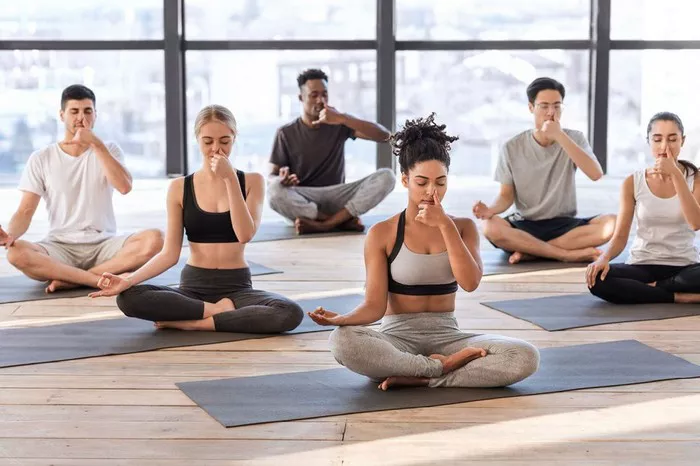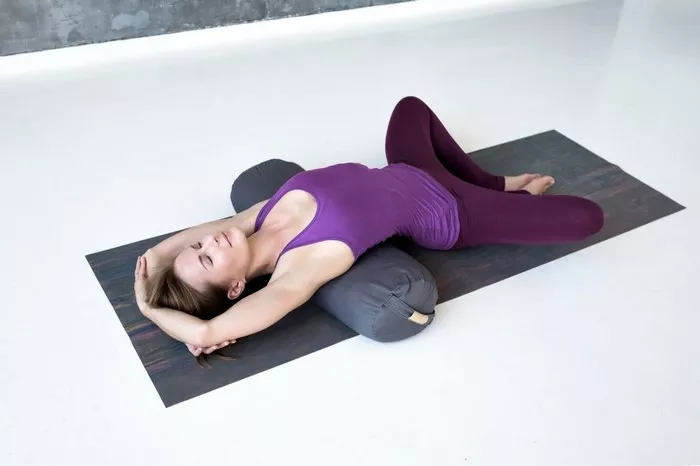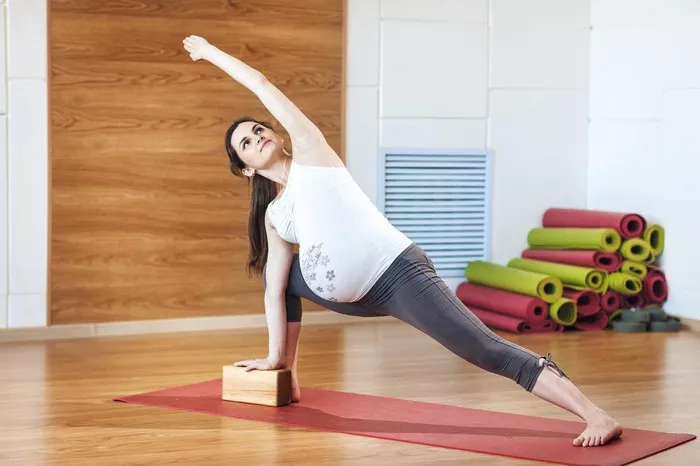Aerial yoga is a unique and exciting form of exercise that combines traditional yoga poses with the use of a hammock or silk fabric, suspended from the ceiling. It allows practitioners to experience weightlessness, increase flexibility, and deepen their stretches in ways that are not possible with traditional ground-based yoga. However, with its dynamic movements, aerial yoga also raises important questions about safety and the best gear for optimal performance. One common query among beginners and seasoned practitioners alike is: what shoes should I wear to aerial yoga?
In this article, we will explore the different factors to consider when choosing footwear for aerial yoga, the importance of proper shoes, and whether it’s necessary to wear them at all. We’ll also discuss the benefits of various shoe types and provide insights into what works best for aerial yoga practitioners.
Understanding Aerial Yoga
Before delving into the specifics of footwear, it’s important to understand the practice of aerial yoga itself. Unlike traditional yoga, which is performed on a yoga mat, aerial yoga involves using a suspended hammock or silk. The hammock is adjustable and can be positioned at different heights, allowing practitioners to perform various poses that involve inversion, balance, and aerial suspension.
The practice aims to enhance flexibility, strength, and balance while improving posture and relieving pressure on the spine. By using the hammock, practitioners are able to perform deep stretches, hang upside down, or transition into poses that would be difficult or even impossible on the ground.
While aerial yoga offers many benefits, it also demands a higher level of body awareness and control, which is why choosing the right footwear or opting to go barefoot is an important consideration for both comfort and safety.
Do You Need Shoes for Aerial Yoga?
One of the first questions that comes to mind when considering shoes for aerial yoga is whether they are even necessary. The simple answer is: no, you don’t need to wear shoes for aerial yoga. In fact, many aerial yoga studios encourage practitioners to practice barefoot.
Here’s why:
Better Grip and Balance: Aerial yoga requires a lot of gripping and holding onto the silk fabric. Without shoes, you can maintain a better grip with your bare feet, which is essential for stability and balance. Shoes may make it harder to connect with the fabric and can compromise your ability to feel the tension in the hammock, which is vital for performing certain poses safely.
Flexibility and Freedom of Movement: Aerial yoga requires a wide range of movements and stretches. Bare feet allow for greater flexibility and enable you to move more freely without any restrictions from shoes. This is especially important when transitioning between poses or performing inversion-based poses, where a full range of motion is required.
Safety: Many aerial yoga poses involve being suspended upside down or engaging in deep stretches. Bare feet allow you to feel more grounded and aware of your body position in relation to the fabric. Shoes could increase the risk of slipping or getting caught in the hammock, leading to possible injuries.
When Should You Consider Shoes for Aerial Yoga?
While barefoot is often the preferred option, there are certain circumstances where you may want to wear shoes for aerial yoga:
Protection and Hygiene: Some people may have concerns about the cleanliness of the yoga space or the condition of the aerial hammock. If you’re practicing in a public studio or in an outdoor setting, you might prefer to wear shoes to protect your feet from potential dirt, germs, or calluses from the fabric.
Foot or Ankle Issues: Individuals with specific foot or ankle conditions, such as plantar fasciitis, bunions, or a history of ankle sprains, may find that wearing supportive shoes helps alleviate discomfort during the practice. Shoes with cushioning and arch support can offer added comfort and reduce strain.
Cold Environments: If you are practicing in an area with cold floors or low temperatures, wearing shoes might provide extra warmth for your feet. This is especially true in winter months or when practicing outdoors in cooler climates.
Types of Footwear Suitable for Aerial Yoga
If you decide to wear shoes for aerial yoga, it’s important to choose the right pair. Not all shoes are appropriate for the practice, as some may limit movement or hinder your ability to engage with the hammock properly. Here are the key considerations and shoe types to keep in mind when choosing footwear for aerial yoga.
1. Grip Socks
Grip socks are a popular choice among aerial yoga practitioners who prefer some foot protection without sacrificing flexibility and balance. These socks are typically made of soft fabric and feature rubberized grips on the soles to prevent slipping on the floor or hammock. They are designed to keep your feet warm while allowing for a full range of motion and ensuring that you won’t slide off the hammock during inversions or dynamic poses.
Pros:
- Excellent traction and grip.
- Flexible, lightweight, and breathable.
- Allows you to feel connected to the fabric while protecting your feet.
- Hygienic and easy to clean.
Cons:
- May not offer as much support as shoes for those with foot conditions.
- Can be too warm for some people during intense sessions.
2. Barefoot Shoes
Barefoot shoes, also known as minimalist shoes, are another option for those who prefer the feeling of being barefoot while still having some protection. These shoes have thin soles that provide a close-to-barefoot experience, promoting natural foot movement and flexibility. The shoes are designed to offer a minimalistic design without hindering the ability to feel the fabric and maintain balance during aerial poses.
Pros:
- Offers a barefoot feel with some added protection.
- Lightweight, flexible, and breathable.
- Great for improving foot strength and flexibility.
Cons:
- Less grip compared to grip socks.
- May not provide sufficient support for individuals with specific foot issues.
3. Yoga Shoes
Yoga shoes are designed specifically for yoga practices, offering flexibility, breathability, and comfort. Many of these shoes feature a thin sole and are made from lightweight materials such as mesh or cotton. They are often equipped with minimal arch support, allowing for a more natural feel when practicing. Some yoga shoes also come with straps or closures to keep them secure on the feet.
Pros:
- Comfortable and breathable.
- Flexible and lightweight for ease of movement.
- Often available in different styles, allowing for personal expression.
Cons:
- May not provide enough grip or traction during aerial poses.
- Not as durable as other types of footwear.
4. Sandal-style Shoes
For practitioners who need extra protection for their feet but still want something lightweight, sandal-style shoes with straps can be an option. These shoes typically feature a thin sole with adjustable straps to keep them in place. While they may not offer the same grip as grip socks or barefoot shoes, they can be useful for those who want more security than going barefoot.
Pros:
- Provide foot protection and coverage.
- Adjustable straps for a secure fit.
- Can be worn both indoors and outdoors.
Cons:
- May not be ideal for more dynamic aerial poses.
- Lack of grip compared to other options like grip socks.
Factors to Consider When Choosing Footwear for Aerial Yoga
Choosing the right footwear for aerial yoga is a personal decision based on your preferences, comfort, and specific needs. Here are some factors to keep in mind when selecting your shoes or deciding whether to practice barefoot.
Comfort: Your feet should feel comfortable in whatever footwear you choose. Ensure that the shoes don’t restrict movement or cause any discomfort. The goal is to have a natural feel when gripping the hammock and transitioning between poses.
Grip and Traction: Since aerial yoga involves movements that require stability and balance, good grip is essential. Look for shoes with rubberized soles or tread patterns that will help you maintain control while practicing.
Flexibility: Shoes should be flexible enough to allow for natural foot movement. Aerial yoga involves a wide range of poses and stretches, so flexibility in your footwear is crucial for comfort and performance.
Hygiene: If you’re practicing in a shared space, consider the cleanliness of the floor and the hammock. Wearing shoes or grip socks can help maintain hygiene, especially if you’re concerned about germs or dirt.
Support: If you have a history of foot or ankle problems, you may want to choose footwear with some support or cushioning to prevent discomfort during your practice.
Personal Preference: Ultimately, the best footwear is the one that feels right for you. Some people prefer the freedom of barefoot practice, while others prefer the added protection and support of shoes.
Conclusion
In conclusion, while shoes are not strictly necessary for aerial yoga, they can be beneficial depending on your preferences and individual needs. Whether you choose to practice barefoot or wear grip socks, barefoot shoes, or yoga shoes, it’s essential to select footwear that provides comfort, flexibility, and grip to enhance your practice. The most important thing is to prioritize safety and listen to your body as you explore the aerial yoga practice.
No matter what type of shoes you choose or whether you decide to go barefoot, always ensure that you are practicing in a safe and controlled environment. With the right footwear and proper technique, you can fully enjoy the many benefits of aerial yoga and take your practice to new heights.
Related Topics:

















